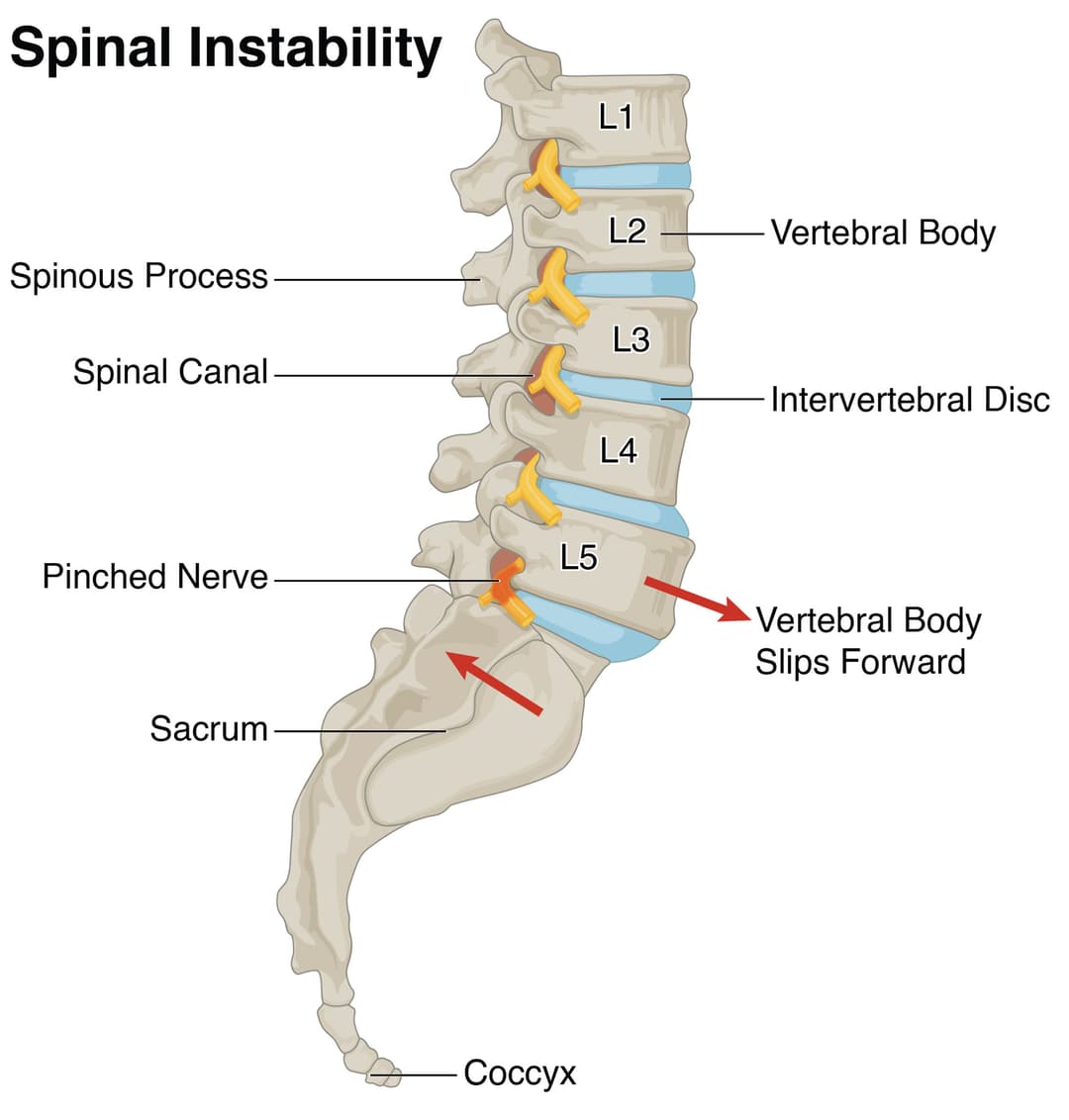Spondylolisthesis is a spinal condition where one vertebra slips forward over the vertebra below it. While it can occur anywhere along the spine, it's most common in the lower back (lumbar spine), particularly at the L4-L5 and L5-S1 levels. This slippage can cause pain and other symptoms by compressing nearby nerves.

Spondylolisthesis (Spinal Instability)
Overview
Causes
-
Spondylolisthesis isn't caused by a single event but rather from repetitive stress on the spine. There are two common variants:
-
Degenerative Spondylolisthesis:
- This is the most common type and generally develops in adults over 50. It occurs as a result of age-related wear and tear on the spinal discs and facet joints, which leads to instability and allows the vertebra to slip. This commonly occurs at the L4-L5 level.
-
Isthmic Spondylolisthesis:
- This type develops commonly in young athletes, like gymnasts and football players, whose sports involve frequent hyperextension (bending backward) of the back. A stress fracture forms in a small segment of the vertebra called the pars interarticularis. The fracture has a difficult time healing, and over time it can lead to a slip. Generally, this will occur at the L5-S1 level.
Symptoms and Diagnosis
Many people with mild spondylolisthesis have no symptoms at all. When symptoms do occur, they can vary from mild to severe. Initially there can be a dull, aching lower back pain that worsens with activity. This can lead to tightness in the hamstrings and back muscles. Over time, the nerve can get pinched leading to pain, numbness, or tingling that radiates down the legs and into the feet (radiculopathy). Many patients have difficulty standing or walking for long periods.
Non-Surgical Treatments
- Physical Therapy and Exercise: Strengthening core and back muscles to stabilize the slipped vertebra.
- Lifestyle modifications: Maintaining a healthy weight and avoiding activities that aggravate the pain.
- Medications: Over-the-counter anti-inflammatory drugs (ibuprofen, naproxen). If ineffective, stronger prescriptions may include nerve pain medications or short-term oral steroids.
- Injections: Steroid injections may provide temporary relief by reducing inflammation around compressed nerves.
Surgical Treatment
Surgery is considered as a last resort when non-surgical options have failed and the patient is experiencing severe, debilitating pain or concerning neurologic deficits.